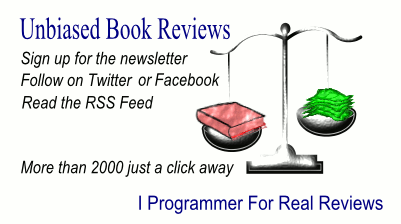| Image Processing: The Fundamentals |
|
Author: Maria Petrou & Costas Petrou
Author: Maria Petrou & Costas Petrou
This book is all about classical image processing - image restoration and enhancement and everything connected to these topics. It is also a very mathematical book taking a mostly linear operator approach to the task. While everything is explained the reader will get a much better idea of what is going on if they know some linear algebra and have met ideas like Fourier transforms and general orthogonal expansions.
The account starts of gently enough with a consideration of what constitutes an image. Here we meet the books question and answer style. "What is a digital Image?" "What is a linear operator?" and so on. This more or less works. It works when the sequence of questions fits in with the way your mind is working but it fails otherwise. It also becomes slightly tedious after a while. I found myself longing for a straightforward account of a topic rather than the artificial punctuation of question and answer. After introducing the basic ideas of linear operators the book moves on to consider image representation using a range of basis functions. It doesn't really make clear the distinction between using optimal basis functions computed from a sample of images and using a set of fixed but easy to compute basis functions in the hope that they might be close to optimal or at least have some nice properties. A more informal approach would allow the authors to discuss these ideas and where theory breaks down in more detail. Image processing is a subject that has a well developed theory - i.e. linear algebra, transforms and filtering - but it also has a great deal that is ad-hoc and non-linear. Chatper 4 is all about image enhancement and is mostly focused on linear filtering and histogram manipulation - which make odd companions in a single chapter. Chapter 5 pushes the ideas forward with image restoration - the Wiener filter and the practical problems of implementing it. We also start to meet some sophisticated non-linear methods. Next we move on to image segmentation and edge detection. these are topics that are often best treated via a more general feature detection extraction problem and part of pattern recognition. Chapter 7 rounds the book off by extending the mostly monochromatic approaches described earlier in the book to the multispectral case. A lot of this chapter is taken up with the theory of color - color perception and the physics of color. There are lots of excesses scattered throughout the book - many of them are trivial and involve a lot of work. A CD with Matlab examples is included bound into the back of the book yet there is no attempt to make use of Matlab within the text - which is a missed opportunity. The book is very long and very fragmented by the question and answer style - more main heading and clear statements of where the descriptions are going would be helpful. This said, there are a lot of comments on the practical implementation of many of the techniques and the illustrations of the techniques in action are helpful. This would make a good book to base a course on image processing on, but only if the students were mathematically able or the instructor was able to select suitable sub-topics to try to contain the overall "linear algebra" approach that the book takes. If you're not happy with math then don't even bother to open the front cover. Image processing doesn't have to be as hard as the book makes it and it is possible to present many of the ideas and techniques without the level of math used. Not a great book on the subject and not an essential book to read but a nice addition to the image procesing bookshelf.
|
|||
| Last Updated ( Friday, 10 September 2010 ) |
